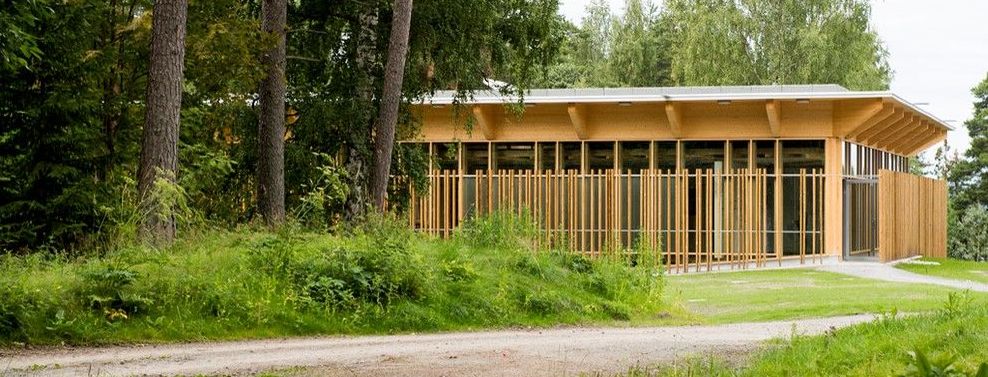Research - Cultural Heritage - Department of Historical Studies
Cultural Heritage
The research in the field of Cultural Heritage Management at the Department of Historical Studies covers a wide range of topics, from research on cultural heritage in outfields in Norway, Sweden and Scotland, to museum studies, studies of painful heritage, research on co-creating and more inclusive management of cultural heritage, to research on use and management of slave forts on the Gold Coast in Africa and cultural heritage in Norway related to the transatlantic slave trade.
Research Projects
These are projects and researchers in the discipline:
The local museum in the global village
The PhD project The local museum in the global village is located within the interdisciplinary field of Museum Studies. In this project I use the Norwegian islands of Frøya and Hitra to study which methods small museums of regional and local history can develop in order to adapt to ongoing changes.
Drawing on different theories of dialogue, I develop a theoretically inspired museum method, namely the ‘dialogic interview’. This provides museums with a tool to make local history relevant to individuals from different demographic groups, especially newcomers to the islands, who, due to labour migration, represent a rapidly growing group. ‘Dialogic interviews’ are tested in co-operation with immigrants and discussed for their potential to fulfill tasks within a socially engaged museum practice.
Parts of the project are conducted in collaboration with MiST (Museums of Sør-Trøndelag) and The Coastal Museum of Sør-Trøndelag. -PhD Project, Insa Müller
July 22 and the Negotiation of Memory
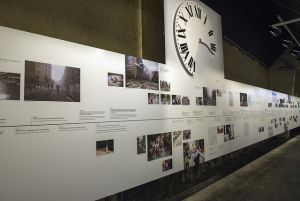 The project July 22 and the Negotiation of Memory studies the cultural afterlife of the terror attacks on July 22 2011 in Norwegian society. The project focuses on the ways the tragedy is being represented and interpreted through temporary and permanent markers in public space. The project researchers, Tor Einar Fagerland, Line Gjermshusengen and Ingeborg Hjorth, also provide advice and participate actively in several memorial projects, notably the 22 July Centre in Oslo and the Labour Youth’s Hegnhuset on Utøya.
The project July 22 and the Negotiation of Memory studies the cultural afterlife of the terror attacks on July 22 2011 in Norwegian society. The project focuses on the ways the tragedy is being represented and interpreted through temporary and permanent markers in public space. The project researchers, Tor Einar Fagerland, Line Gjermshusengen and Ingeborg Hjorth, also provide advice and participate actively in several memorial projects, notably the 22 July Centre in Oslo and the Labour Youth’s Hegnhuset on Utøya.
The project is owned by the Cultural Heritage Programme at the Department of Historical Studies, NTNU, and is financed by NTNU and the Falstad Centre.
A list of project publications is available in CRIstin (Current Research Information System in Norway).
For further information see the project’s web site.
Cultural heritage in outfields
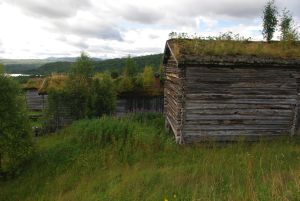 – historical land-use, management and present day challenges – a comparative study: Norway, Scotland and Sweden
– historical land-use, management and present day challenges – a comparative study: Norway, Scotland and Sweden
The primary objective is to extend the knowledge on cultural heritage in outfields and the management thereof from the early modern and modern periods, using data from comparable regions in Norway, Scotland and Sweden, in order to safeguard what we would consider valuable traces and remnants from the past.
A secondary objective is to examine critically the different measures developed to assess cultural heritage in the three countries concerned, to mirror management norms and practices and conceptions of the past.
Furthermore, the project aims at presenting ideal types of integrated management of natural and cultural heritage in both material and immaterial aspects. The project will also contribute to develop management tools in regard of cultural heritage in the countries concerned.
Moreover, an objective is to develop programmes for sustainable communication of cultural heritage in outfields, in situ, by exhibitions or by other media. - Aud Mikkelsen Tretvik is project manager.
MINDGAP
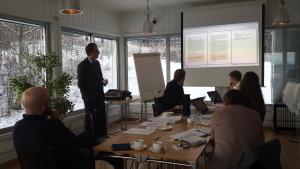 – facilitating co-creation of sustainable and inclusive cultural heritage management: minding the gap between cultural, social and administrative entities
– facilitating co-creation of sustainable and inclusive cultural heritage management: minding the gap between cultural, social and administrative entities
The objectives of this project are more thorough knowledge of present day relationship between cultural heritage institutions and the society they are a part of, theoretical and practical instruments for interpreting and mediating in processes of co-creating cultural heritage, broader participation and representation at cultural heritage institutions, increased generic social outcomes among the participants and strengthened international cooperation and networking within the cultural heritage sector.
The project will be run by a group of researchers at IHS in collaboration with a researcher at MiST (the museums in Sør-Trøndelag), and a consortium is established with partners from Centre for Rural Research, Trondheim, Astra National Museum, Sibiu, the Nordic Center for Heritage Learning and Creativity, Östersund, Trinity College, Dublin, and the University of Santiago de Compostela. - Aud Mikkelsen Tretvik is project manager.
Norway in the transatlantic slave trade
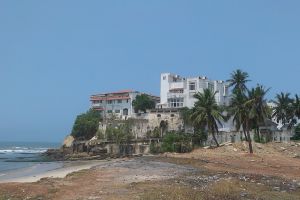 The project focuses on memories of the Danish-Norwegian participation in the transatlantic slave trade. Norwegians were part of this trade from the 17th to the 18th century, and to this day we find several physical remains from this trade several places in the world. This research project investigates how these remains have been and are understood and managed, both in Ghana and in Norway. The project aims to analyse the development of memories of the slave trade. Also, the project explores how the painful history of the slave trade can be disseminated in the future, with a particular focus on the use of digital tools. -Postdoc-projekt, Jon Olav Hove
The project focuses on memories of the Danish-Norwegian participation in the transatlantic slave trade. Norwegians were part of this trade from the 17th to the 18th century, and to this day we find several physical remains from this trade several places in the world. This research project investigates how these remains have been and are understood and managed, both in Ghana and in Norway. The project aims to analyse the development of memories of the slave trade. Also, the project explores how the painful history of the slave trade can be disseminated in the future, with a particular focus on the use of digital tools. -Postdoc-projekt, Jon Olav Hove
Researchers
Cultural Heritage
Publications and other research contributions
The departments latest activities in the Norwegian research database Cristin.

